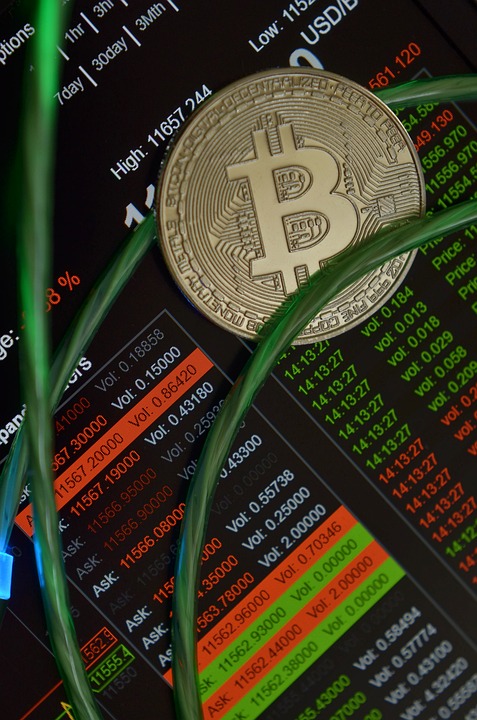As the digital landscape continues to evolve, the Digital Asset Conference 2023 showcased the latest advancements, trends, and regulatory conversations shaping the future of digital assets. Held in a vibrant setting with industry leaders, innovators, and regulators, the conference offered a plethora of insights that will guide stakeholders in understanding and navigating this rapidly changing environment.
Understanding Digital Asset Evolution
One of the central themes of the conference was the ongoing evolution of digital assets, which encompasses cryptocurrencies, tokenized assets, and decentralized finance (DeFi). Keynote speakers highlighted how digital currencies are transforming traditional financial systems. For instance, the rise of central bank digital currencies (CBDCs) is prompting discussions around regulatory frameworks and the implications for monetary policy.
Regulatory Landscape: A Double-Edged Sword
As digital assets gain traction, regulations are imperative to foster growth while protecting consumers. Panel discussions emphasized that while tighter regulations might pose challenges, they can also enhance legitimacy and trust in digital markets. Experts from regulatory bodies and industry professionals debated the fine balance between innovation and compliance, stressing the need for adaptive regulations that evolve alongside technology.
One notable trend is the push for global regulatory harmonization, which seeks to standardize approaches across jurisdictions. This is particularly essential considering the borderless nature of digital assets. Participants argued that collaboration among regulators worldwide is critical to mitigate risks such as fraud and market manipulation.
The Role of Technology in Transformation
Technological advancements underpinning the digital asset ecosystem were extensively explored. Blockchain technology continues to be a cornerstone, providing transparency and security. However, discussions revealed that the future of digital assets extends beyond blockchain alone. Emerging technologies such as artificial intelligence (AI) and machine learning are being integrated into digital asset management, enabling improved decision-making through predictive analytics and enhanced security protocols.
Moreover, the advent of interoperability and cross-chain solutions promises to create a more interconnected digital asset ecosystem. Developers and entrepreneurs are excited about the potential to streamline transactions and foster collaboration between different blockchain networks.
Institutional Adoption: The Current State
A significant number of institutional investors are beginning to embrace digital assets, with many citing diversification and hedging against inflation as motivating factors. However, concerns about volatility and regulatory uncertainty remain prominent. Panels featuring institutional stakeholders highlighted their strategies for risk management and capitalizing on emerging opportunities.
The increasing number of financial products linked to digital assets, ranging from ETFs to derivatives, signifies a growing acceptance within traditional finance. Industry experts suggest that as institutional involvement deepens, it will help stabilize the market, leading to a more mature digital asset landscape.
The Future of Decentralized Finance (DeFi)
DeFi has gained momentum as a disruptive force in the financial sector, allowing users to lend, borrow, and trade without intermediaries. The conference provided a platform for discussing both the potential benefits and risks of DeFi solutions. Notably, security vulnerabilities and the need for robust audit mechanisms were recurrent themes of concern.
Thought leaders also examined the potential of DeFi to promote financial inclusion, particularly in underserved regions. By leveraging blockchain technology, DeFi has the capability to eliminate barriers to access, enabling individuals without traditional banking services to participate in the global economy.
The Human Element: Education and Awareness
An often-overlooked aspect of digital asset growth is the importance of education and public awareness. Attendees and speakers alike acknowledged that for mass adoption to occur, comprehensive educational initiatives must be implemented. Financial literacy programs focused on digital assets can empower consumers to make informed choices and mitigate risks associated with digital investing.
Efforts to dispel myths surrounding cryptocurrencies and promote understanding of technological foundations will be crucial as the sector matures.
Conclusion: A Bright Yet Cautious Future
The 2023 Digital Asset Conference made it clear that the digital asset landscape is poised for transformative growth, driven by technological innovation, regulatory evolution, and increasing institutional acceptance. While challenges remain, including regulatory uncertainties and security concerns, the overall sentiment among attendees was one of optimism and excitement.
Navigating this future will require collaboration across sectors, a commitment to education, and a proactive approach to regulation—ensuring that as we move forward, the benefits of digital assets are maximized while risks are effectively managed. The conversations sparked at this year’s conference serve as a roadmap for stakeholders eager to embrace the potential of digital assets in reshaping the global financial landscape.

